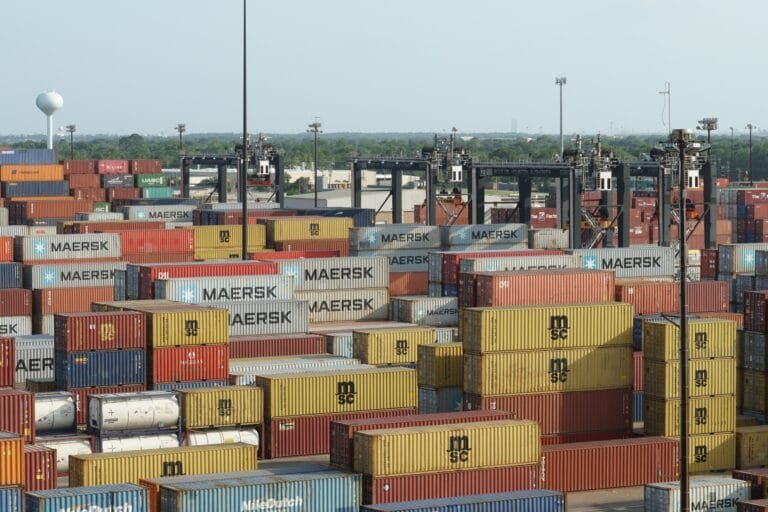The logistics sector is bracing for potential disruption as fears of an East Coast port strike intensify. With both sides remaining firm, the industry believe a strike is increasingly likely, which could have significant ramifications for the supply chain across the United States and beyond
With port operators extending hours and special measures being implemented for refrigerated shipments to avoid potential lost cargo during a strike. Ocean carriers have started adding surcharges on shipments headed for East Coast ports in anticipation of disruptions, highlighting the seriousness with which companies are treating this impending event.
“Air cargo rates between China and North America have already been elevated to peak season levels for much of the year, largely driven by the high volume of e-commerce shipments,” Judah Levine. Head of Research at Freightos Group, stated. “With regular peak season demand expected to increase in October, along with the usual holiday-related e-commerce demand, air capacity and rates will face additional pressure. If a strike occurs, it would only exacerbate this strain on capacity.”
“There has also been some anticipation of a potential strike, leading to a pull-forward of peak season ocean freight volumes.
Impact on the air
The duration of the strike, if it happens, will be a crucial factor. If it only lasts a few days, it may create a backlog on the East Coast but shouldn’t be a significant problem for the West Coast. The backlog could take several additional days to resolve.
With higher costs, shippers will likely move only the minimum inventory needed to air, which may limit the overall impact on consumer prices—at least in the short term. For consumer prices to be significantly affected, any disruptions, such as a strike, would need to be prolonged.
“Airfreight is often a reactionary option during supply chain disruptions, particularly for shippers that wouldn’t normally consider it, and this current environment could make airfreight capacity even more scarce and expensive,” Levine declared.
“Some shippers may want to switch to air freight but might struggle to find available capacity, particularly during peak season. Those who do manage to secure space will likely face much higher rates, especially in the spot market, since this wasn’t planned in advance with block space agreements.”
Political stakes
The potential for government intervention does looms. While the Biden administration has tools at its disposal to halt the strike, such as invoking the Taft-Hartley Act, there are no indications that the White House plans to intervene. The administration’s pro-labour stance, combined with upcoming presidential elections, makes government interference politically complicated.
“There are no clear signs that a strike will be avoided. The two sides involved haven’t had direct negotiations since June, and there doesn’t seem to be progress toward an agreement,” Levine explained.
“Regarding government intervention, the union has expressed that it does not want government involvement, and the Biden administration has indicated that it has no plans to end a strike by executive order.
“That said, a prolonged strike would have serious economic consequences, causing business disruptions, which they’d want to avoid.
“All signs point to an impending strike, and while it seems unlikely that the government will use executive orders to force workers back, they will likely be motivated to ensure the strike doesn’t last long, considering the economic and political implications.”
Lessons from recent history
The recent Baltimore bridge collapse serves as a reminder of how supply chain challenges can impact logistics, albeit on a smaller scale. While the Baltimore event was manageable, diverting cargo to other ports with minimal impact, an East Coast-wide strike would be a different scenario altogether. With nearly half of the container capacity of the U.S. East Coast at stake, a strike would create a significant disruption, far beyond the isolated issues caused by localised infrastructure failures.
“Initially, vessels already enroute to East Coast ports would likely sit idle while waiting for a resolution. New bookings might be diverted to other regions, with some carriers considering offloading in Mexico or the Caribbean to use those locations as transshipment hubs until the cargo could be moved again—possibly to the West Coast or elsewhere,” Levine explained.
“In the long run, West Coast ports alone couldn’t handle the entire diverted volume, as they’re not large enough to absorb all East Coast container traffic. For instance, ports like Los Angeles and Long Beach together have a similar volume capacity to East Coast ports like New York/New Jersey, Savannah, and Charleston, meaning a full shift to the West Coast would be overwhelming.
“That said, the West Coast ports are in much better shape now than they were during the pandemic. During the pandemic, container yard congestion was a major bottleneck; even if crews were available, there was no space for offloading containers.
“Lessons learned from that period have led to improved logistics, such as using off-site warehouses and container storage, which should help them better manage increased volumes and keep vessels moving effectively.”



